 In Janice Hadlow’s The Other Bennet Sister, a brilliant effort to give the neglected-by-everyone Mary Bennet a life of her own, Mary’s reading is one of the most important aspects of the book – we see her at first believing, because she knows she is different than her other four far prettier and more appealing sisters, that her prospects for the expected life of a well-married woman are very limited, and that she must learn to squash her passions and live a rational life. She also mistakenly thinks that by becoming a reader of philosophical, religious, and conduct texts that she will finally gain approval and maybe even love from her distant, book-obsessed father.
In Janice Hadlow’s The Other Bennet Sister, a brilliant effort to give the neglected-by-everyone Mary Bennet a life of her own, Mary’s reading is one of the most important aspects of the book – we see her at first believing, because she knows she is different than her other four far prettier and more appealing sisters, that her prospects for the expected life of a well-married woman are very limited, and that she must learn to squash her passions and live a rational life. She also mistakenly thinks that by becoming a reader of philosophical, religious, and conduct texts that she will finally gain approval and maybe even love from her distant, book-obsessed father.
So Mary embarks on a course of serious rational study – and one of the most insightful things in the book is that she learns, after much pain, that this is no way to lead a life, to find happiness, to find herself. She rejects the novels like the ones Mrs. Bennet finds at the local circulating library as being frivolous, largely because James Fordyce tells her so…
So, I have made a list of all the titles that Hadlow has Mary reading or referring to – all real books of the time, and many mentioned and known by Jane Austen. Hadlow is very specific in what books she puts in Mary’s hands! And shows her own knowledge of the reading and the reading practices of Austen’s time. [If anyone detects anything missing from this list, please let me know…]
I am giving the original dates of publication of each title; most all the titles in one edition or another are available on Google Books, HathiTrust, Internet Archive, or the like – I provide a few of those links, if you are so inclined to become such a rational reader as Mary….
***************
Anonymous. The History of Little Goody Two Shoes (show JA’s copy). London: John Newbury, 1765. Attributed to various authors, including Oliver Goldsmith. We know that Jane Austen has her own copy of this book, here with her name on it as solid proof.
Mrs. [Sarah] Trimmer. The Story of the Robins. Originally published in 1786 as Fabulous Histories, and the title Trimmer always used. You can read the whole book here: https://en.wikisource.org/wiki/The_Story_of_the_Robins

image: HockliffeProject: http://hockliffe.dmu.ac.uk/items/0241pages.html?page=001
Rev. Wetenhall Wilkes. A Letter of Genteel and Moral Advice to a Young Lady: Being a System of Rules and Informations: Digested Into a New and Familiar Method, to Qualify the Fair Sex to be Useful, and Happy in Every Scene of Life. London, 1746. Another conduct book.
Full text here: https://catalog.hathitrust.org/Record/012393127
***********
Catharine Macaulay. The History of England. 8 vols. London, 1763-83. A political history of the seventeenth century, covering the years 1603-1689. This was very popular and is in no way related to the later History published by Thomas Babington Macaulay. You can read more about this influential female historian in this essay by Devoney Looser: Catharine Macaulay: The ‘Female Historian’ in Context

image: British Library https://www.bl.uk/collection-items/sermons-to-young-women
Rev. James Fordyce. Sermons to Young Women. London, 1766. A conduct manual.
In Pride and Prejudice, Mr. Collins chooses to read Fordyce’s Sermons to Young Women aloud to the Bennet sisters, Lydia especially unimpressed: “Lydia gaped as he opened the volume, and before he had, with very monotonous solemnity, read three pages, she interrupted him …’.
You can find it on google in later editions, but here is an abstract for 2 of the sermons to give you an idea.
And here an essay on Fordyce and P&P by Susan Allen Ford, who also wrote the introduction for the Chawton House Press edition of the Sermons (2012) : http://www.jasna.org/persuasions/on-line/vol34no1/ford.html
*************
Frances Burney. Evelina, or the History of a Young Lady’s Entrance into the World. London, 1778. Hadlow gives Evelina a good hearing – in the discussion in Mr. Bennet’s library with Elizabeth and Mary. Elizabeth directly quotes Austen’s own words in defense of the novel that are found in Northanger Abbey. [Evelina, and Mary’s difficulty in coming to terms with such a frivolous story, is mentioned more than once].
***********
Other Novels mentioned are:
– Samuel Richardson. The History of Sir Charles Grandison. London, 1753. 7 vols. Reported to be Austen’s favorite book, all seven volumes!
– Henry Fielding. The History of Tom Jones, a Foundling. 4 vols. London, 1749. Supposedly the reason Richardson wrote his Grandison. [Mentioned more than once] – I think we should read this book next for our JABC!
– Laurence Sterne. The Life and Opinions of Tristram Shandy, Gentleman. 9 vols. London, 1759-1767.
***************
Hugh Blair. Sermons. Vol. 1 of 5 published in 1777.
You can view it full-text at HathiTrust.
Mary Crawford refers to Blair in Mansfield Park:
“You assign greater consequence to the clergyman than one has been used to hear given, or than I can quite comprehend. One does not see much of this influence and importance in society, and how can it be acquired where they are so seldom seen themselves? How can two sermons a week, even supposing them worth hearing, supposing the preacher to have the sense to prefer Blair’s to his own, do all that you speak of? govern the conduct and fashion the manners of a large congregation for the rest of the week? One scarcely sees a clergyman out of his pulpit.”
***************
William Paley. A View of the Evidences of Christianity. London, 1794.
Aristotle. The Ethics of Aristotle. [no way to know the exact edition that Mr. Collins gives to Mary – it’s been around for a long time!]
Mentions: all Enlightenment thinkers and heavy reading for Mary!
– John Locke
– William Paley (again)
– Jean-Jacques Rousseau
– David Hume
A Dictionary of the Greek Language – Mr. Collins gives a copy to Mary.
*************
Edward Young. The Complaint: or, Night-Thoughts on Life, Death, and Immortality. [Known as Night-Thoughts]. London, 1742-45. [No wonder Mr. Hayward suggested a lighter type of poetry!]
You can read the whole of it here, if you are up to it…: https://www.eighteenthcenturypoetry.org/authors/pers00267.shtml
**************

William Wordsworth, portrait by Henry Edridge, 1804; in Dove Cottage, Grasmere, England. Britannica.com
William Wordsworth. Lyrical Ballads. London, 1798. Full title: Lyrical Ballads, with a Few Other Poems is a collection of poems by William Wordsworth and Samuel Taylor Coleridge [Mr. Hayward does not mention Coleridge at all!], first published in 1798 and considered to have marked the beginning of the English Romantic movement in literature. Most of the poems in the 1798 edition were written by Wordsworth; Coleridge has only four poems included, one being his most famous work, The Rime of the Ancient Mariner.
Here is a link to the full-text of “Tintern Abbey” that so moved Mary: https://www.poetryfoundation.org/poems/45527/lines-composed-a-few-miles-above-tintern-abbey-on-revisiting-the-banks-of-the-wye-during-a-tour-july-13-1798
*********************
William Godwin. Enquiry Concerning Political Justice and its Influence on Morals and Happiness. London, 1793. [Godwin, it is worth noting, married Mary Wollstonecraft and was the father of Mary Godwin Shelley]. Outlines Godwin’s radical political philosophy.
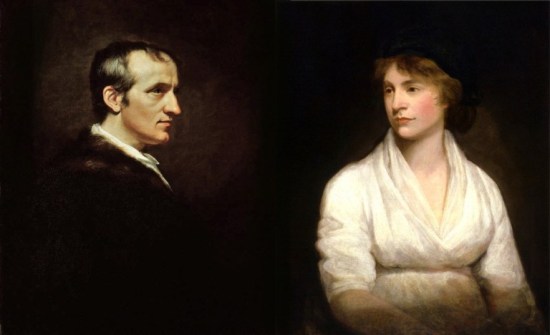
William Godwin (portrait by James Northcote) and Mary Wollstonecraft (portrait by John Opie) – from BrainPickings.org
************
Machiavelli – is referred to by Mary, so assume she is familiar with his The Prince (1513).
****************

Image: Guide to the Lakes. ‘View on Winandermere’ [now called Windermere], by Joseph Wilkerson. Romantic Circles
******************
John Milton. Paradise Lost. A mention by Mr. Ryder who is defeated by its length, so we know Mary was familiar with it.
***********
The Edinburgh Review / The Quarterly Review – brought to Mary by Mr. Ryder, and for which Mr. Hayward perhaps wrote his reviews. The Edinburgh Review (1802-1929); Quarterly Review (1809-1967, and published by Jane Austen’s publisher John Murray) – both were very popular and influential publications of their time…
*********************
The Other Bennet Sister is an enjoyable read – it is delightful to see Mary Bennet come into her own, that despite what she viewed as an unhappy childhood, she finds her way through a good number of books in a quest to live a rational, passionless existence. And that the development of some well-deserved self-esteem with the help of various friends and family, might actually lead her to a worthy equal partner in life, just maybe not with Mrs. Bennet’s required £10,000 !
- Here is an excellent review of the book at The Christian Science Monitor: https://www.csmonitor.com/Books/Book-Reviews/2020/0408/The-Other-Bennet-Sister-focuses-attention-on-bookish-Mary
- And an interview with the author at NPR: https://www.npr.org/2020/04/09/830069319/elizabeths-more-serious-sister-mary-takes-the-spotlight-in-the-other-bennet-sist


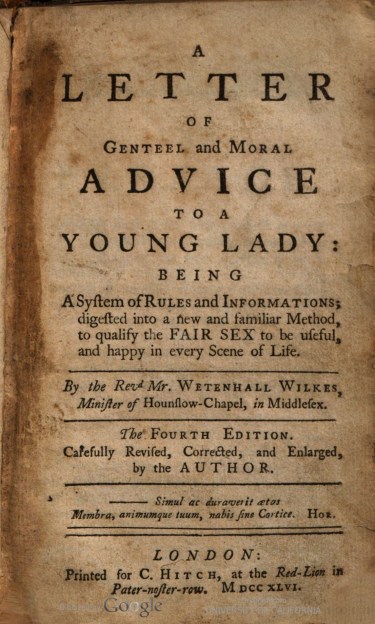
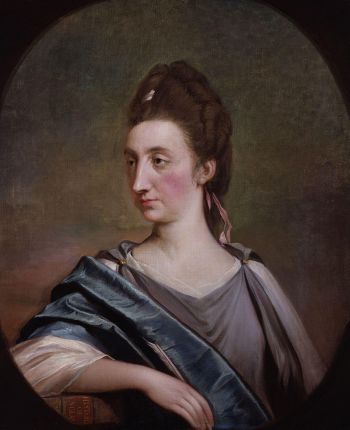

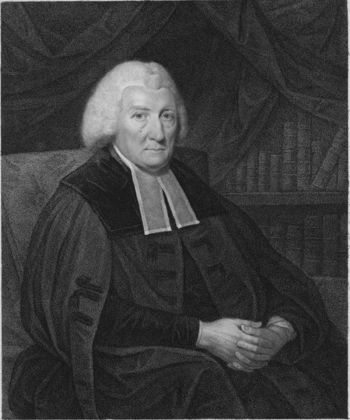

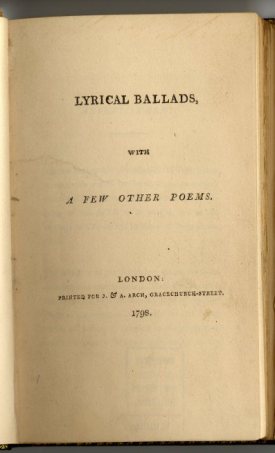


Some of these surprise me and some don’t, Deb. Wordsworth was a Romantic. All that wild freedom of nature and the spirit which links to his sympathies for French Revolutionary ideas in his youth. The Austens would certainly not have agreed with those principles. The Austen’s were very patriotic. ” Liberty Equality, Fraternity. Vive La France!!!” (Oh sorry, I said that too loud.) I got carried away slightly.
The novel Evelina was partly written while Fanny Burney was staying with her father, Charles Burney, at a friends estate in Chessington. Remember the poor lad behind the bar who messed up your debit card, Deb? That was in Chessington.
LikeLike
Agree Tony about the Austens – and perhaps why Hadlow has Mary’s awakening come from reading Wordsworth – I was a Coleridge fan myself, but even so have never forgotten Tintern Abbey and sought it out when I visited it there several years ago.
I do remember that poor lad – I was so intent upon paying our tab after you had been driving me around southern England all day – and you ended up paying after all because he just couldn’t get my card to work – thanks for telling me it was Chessington – I would never have remembered that in a million years! Great pub though, despite the poor lad!
LikeLike
Pingback: Reading with Austen: What Mary Bennet Reads in “The Other Bennet Sister” by Janice Hadlow | Reading with Austen
Pingback: SWFT Wellbeing Reading Group book review- The other Bennet sister by Janice Hadlow – Knowledge and Library Services